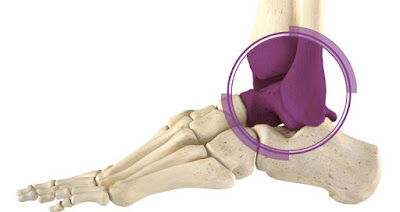Cementless total hip replacement is a medical procedure used to
replace a damaged hip joint with new prosthetic joint without the use of cement
as in case of normal hip replacement
surgery where the prosthetic joint is fixed in place of the affected joint with
the help of fast drying bone cement. Cementless total hip replacement surgery
is carried out by fixing the prosthetic joint in its place with the help of a
porous coating which is extremely beneficial as it allows freespace to
encourage the natural growth of the bone. This can be done by using a variety
of substances depending upon the needs of the patient and the severity of the
problem. Many people opting for Total Hip Replacement Surgery In India have given preference to Cementless total hip replacement as
the surgery is much more efficient in treating problems related to hip bone and
joints.
Bone and joint problems are very
common in today's world. The main reason behind this is arthritis and
osteoporosis. Arthritis affects our knees, shoulders, hips, ankles and wrists,
though its effects can be seen on other body parts as well. Arthritis start
showing its traces when a person is in his 40's and becomes more prominent with
each passing year. The hip joints can get damaged buy excessive wear and tear
or an injury perceived in an accident and this leads to arthritis. Sports persons
especially are prone to develop such kind of problems. When the hip of a person
is affected by arthritis it can lead to severe lower back pain accompanied by
stiffness. The problem effects the person's ability to walk as a simple
movement can prove to be extremely painful. This problem can be easily cured by
hip replacement surgery which can be of two types namely partial hip
replacement surgery and total hip replacement surgery. Total hip replacement
surgery involves the complete replacement of the affected joint. The procedure
is used in case of severe joint damage.
Cement Less Total Hip Replacement involves the use of screws and pegs
to hold the prosthetic joint in its place and hence the natural bone has ample
of space to grow. This reduces the chances of developing any such problems in
future and the patient is relief from all the pain and discomfort. The surgery has
had many sports to go back to the field and continue pursuing their career in
sports.
After the surgery it is very
important that the person does not exert excess pressure on the operated hip.
Carrying heavy objects should be avoided as much as possible. Physiotherapy can
be opted for a healthy and fast recovery. In case of any pain and discomfort,
the patient should immediately consult his surgeon. Vigorous exercise should be
avoided for sometime as these may hinder the healing process and aggregate the
problem. Lifting heavy objects, jumping, running and swimming should be avoided
unless completely healed. The wound should be cleaned and sterilised properly
to eliminate any chances of infection.
Source By: Hip Replacement Surgery


